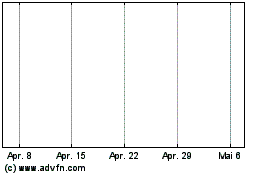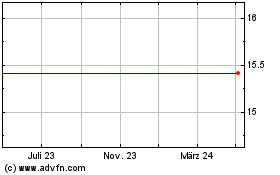Auto Makers Start 2021 Strongly Despite Supply Constraints
01 April 2021 - 6:32PM
Dow Jones News
By Nora Naughton
Auto makers are reporting a jump in vehicle sales in the opening
months of 2021, boosted by continued consumer demand and some
easier year-ago comparisons, but chip shortages and other
supply-chain snags threaten to derail that momentum.
General Motors Co. on Thursday posted a nearly 4% increase in
its U.S. sales for the January-to-March period, illustrating that
its business continues to recover during the pandemic despite
supply constraints. The company said it expects auto demand to
remain strong throughout the year.
Toyota Motor Corp., which wasn't hit by the chip shortage until
later in the quarter, reported a 22% increase in its first-quarter
U.S. sales. Meanwhile, South Korean auto maker Hyundai Motor Co.
said it was able to keep U.S. dealer inventory steady during the
first quarter, and reported a 28% increase in sales.
Other major auto makers including Ford Motor Co. and Stellantis
NV, formerly Fiat Chrysler Automobiles, are also expected to report
higher U.S. auto sales for the first quarter, according to
car-shopping website Edmunds.com.
Overall, analysts forecast U.S. auto sales will rise roughly 8%
for the three-month period, and the industry's annualized selling
pace in March could hit 16.5 million vehicles, a sign that the
level of demand is about on par with what it was before the
Covid-19 pandemic.
The increase is in part being driven by the deep collapse in
business at the end of March 2020, when the economy began to shut
down to limit the spread of the coronavirus.
Auto-industry sales in January and February were still off 3.3%
and 13%, respectively, according to automotive data firm Motor
Intelligence. March sales, however, are expected to leap, with car
companies posting double-digit gains for the month compared to the
prior-year period, industry forecasts show.
For the U.S. car business, it has been a choppy start to the
year. A global shortage of semiconductors has disrupted production
at many U.S. factories, hitting car-company earnings and leaving
dealerships with lower inventory, particularly on popular trucks
and sport-utility vehicles. Then, in February, winter storms in
Texas further disrupted the production of plastics used in seat
foam and other materials, adding to the industry's supply-chain
woes.
Still, customers kept buying, and dealers say they are now
struggling to restock. New-vehicle demand is only expected to grow
in the coming months as the car business hits the busy
spring-selling season and the distribution of new stimulus checks
puts more money in shoppers' pockets.
The tight inventory didn't have much impact on buyers in the
first quarter, but that is likely to change in the coming months,
Cox economist Charlie Chesbrough said.
Already, at the end of February, inventory levels were down 26%
over the year-earlier period, according to research firm Wards
Intelligence. That is near the lows reached last summer when auto
makers were only starting to recover from the pandemic-related
factory closures in the spring.
Ford said Wednesday that it would halt production in April at
several U.S. factories, including its two major truck plants.
Stellantis, the maker of Jeep, Ram and Chrysler, said it would halt
production at five North American plants through mid-April,
following other major car companies that have paused work at
factories in the region because of parts shortages and backups at
West Coast ports.
Some dealers worry the extended inventory shortages could
disrupt some important new-model launches this year.
Joe Shaker, owner of Shaker Automotive Group, which has stores
in Connecticut and Massachusetts, said he is most concerned about
long-awaited vehicles such as the Ford Bronco and Jeep Wagoneer
being delayed.
"We'll keep battling through and hopefully be better for it when
we're on the other side," Mr. Shaker said of the inventory
crunch.
Jeff Dyke, president of Sonic Automotive Inc., a publicly traded
dealership chain based in North Carolina, is more optimistic. Mr.
Dyke said that while sales during the summer months could be lean
as dealers restock, he is encouraged by the strength in demand
throughout the pandemic.
"As we roll into the third and fourth quarter, this too shall
pass," he said.
Write to Nora Naughton at Nora.Naughton@wsj.com
(END) Dow Jones Newswires
April 01, 2021 12:17 ET (16:17 GMT)
Copyright (c) 2021 Dow Jones & Company, Inc.
Stellantis NV (BIT:STLA)
Historical Stock Chart
Von Mär 2024 bis Apr 2024

Stellantis NV (BIT:STLA)
Historical Stock Chart
Von Apr 2023 bis Apr 2024
